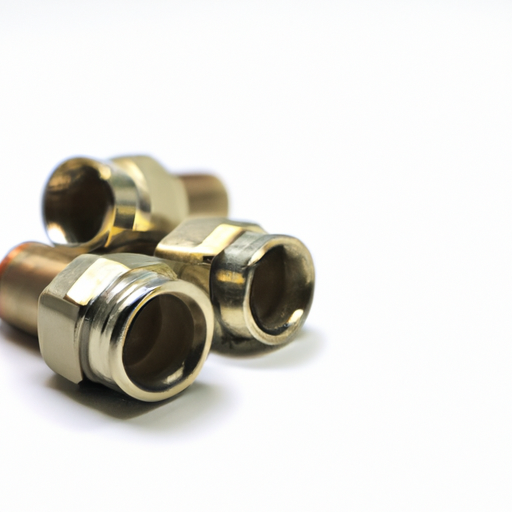Title: Product Standards for Isolators: Ensuring Safety and Efficiency

1. ISO 14644 Cleanroom Standards (200 words) One of the fundamental product standards for isolators is ISO 14644, which specifies the requirements for cleanrooms and associated controlled environments. Cleanrooms are classified based on the concentration of airborne particles, and isolators must adhere to specific cleanliness levels to ensure the integrity of the contained environment. ISO 14644 provides guidelines for particle count limits, air filtration, and monitoring systems, ensuring that isolators meet the required cleanliness standards.
2. Occupational Safety and Health Administration (OSHA) Standards (200 words) OSHA, a regulatory body in the United States, sets standards to ensure the safety and health of workers. These standards include requirements for isolators used in industries such as pharmaceuticals, biotechnology, and chemical manufacturing. OSHA standards cover various aspects, including ventilation, containment, and personal protective equipment (PPE). Compliance with OSHA standards is crucial to protect operators from exposure to hazardous substances and maintain a safe working environment.
3. Good Manufacturing Practice (GMP) Guidelines (250 words) GMP guidelines are essential for industries involved in the production of pharmaceuticals, medical devices, and food products. These guidelines ensure that products are consistently produced and controlled according to quality standards. Isolators used in GMP-regulated industries must comply with specific requirements outlined in GMP guidelines, such as material compatibility, surface finish, and ease of cleaning. Adhering to GMP guidelines guarantees the integrity and quality of the products being manufactured.
4. International Society for Pharmaceutical Engineering (ISPE) Guidelines (250 words) ISPE provides guidelines for the design, construction, and operation of pharmaceutical facilities, including isolators. These guidelines cover various aspects, including facility layout, airflow patterns, and equipment design. ISPE guidelines emphasize the importance of isolator design to prevent cross-contamination, maintain sterility, and ensure operator safety. Compliance with ISPE guidelines is crucial for pharmaceutical manufacturers to meet regulatory requirements and produce safe and effective products.
5. European Pharmacopoeia (EP) Standards (200 words) The European Pharmacopoeia sets standards for the quality of medicines in Europe. It includes specific requirements for isolators used in pharmaceutical manufacturing, emphasizing sterility, containment, and material compatibility. EP standards provide detailed guidelines for isolator design, construction materials, and performance testing. Compliance with EP standards is essential for pharmaceutical manufacturers operating in Europe to ensure product quality and regulatory compliance.
Conclusion (100 words) Product standards play a vital role in ensuring the safety, efficiency, and compliance of isolators used in various industries. ISO 14644, OSHA standards, GMP guidelines, ISPE guidelines, and EP standards are among the key standards that govern isolator design, construction, and operation. Adhering to these standards guarantees the integrity of the contained environment, protects operators from exposure to hazardous substances, and ensures the production of high-quality products. Manufacturers and operators must stay updated with the latest standards and regulations to maintain a safe and compliant working environment while utilizing isolators effectively.
Title: Product Standards for Isolators: Ensuring Safety and Efficiency

1. ISO 14644 Cleanroom Standards (200 words) One of the fundamental product standards for isolators is ISO 14644, which specifies the requirements for cleanrooms and associated controlled environments. Cleanrooms are classified based on the concentration of airborne particles, and isolators must adhere to specific cleanliness levels to ensure the integrity of the contained environment. ISO 14644 provides guidelines for particle count limits, air filtration, and monitoring systems, ensuring that isolators meet the required cleanliness standards.
2. Occupational Safety and Health Administration (OSHA) Standards (200 words) OSHA, a regulatory body in the United States, sets standards to ensure the safety and health of workers. These standards include requirements for isolators used in industries such as pharmaceuticals, biotechnology, and chemical manufacturing. OSHA standards cover various aspects, including ventilation, containment, and personal protective equipment (PPE). Compliance with OSHA standards is crucial to protect operators from exposure to hazardous substances and maintain a safe working environment.
3. Good Manufacturing Practice (GMP) Guidelines (250 words) GMP guidelines are essential for industries involved in the production of pharmaceuticals, medical devices, and food products. These guidelines ensure that products are consistently produced and controlled according to quality standards. Isolators used in GMP-regulated industries must comply with specific requirements outlined in GMP guidelines, such as material compatibility, surface finish, and ease of cleaning. Adhering to GMP guidelines guarantees the integrity and quality of the products being manufactured.
4. International Society for Pharmaceutical Engineering (ISPE) Guidelines (250 words) ISPE provides guidelines for the design, construction, and operation of pharmaceutical facilities, including isolators. These guidelines cover various aspects, including facility layout, airflow patterns, and equipment design. ISPE guidelines emphasize the importance of isolator design to prevent cross-contamination, maintain sterility, and ensure operator safety. Compliance with ISPE guidelines is crucial for pharmaceutical manufacturers to meet regulatory requirements and produce safe and effective products.
5. European Pharmacopoeia (EP) Standards (200 words) The European Pharmacopoeia sets standards for the quality of medicines in Europe. It includes specific requirements for isolators used in pharmaceutical manufacturing, emphasizing sterility, containment, and material compatibility. EP standards provide detailed guidelines for isolator design, construction materials, and performance testing. Compliance with EP standards is essential for pharmaceutical manufacturers operating in Europe to ensure product quality and regulatory compliance.
Conclusion (100 words) Product standards play a vital role in ensuring the safety, efficiency, and compliance of isolators used in various industries. ISO 14644, OSHA standards, GMP guidelines, ISPE guidelines, and EP standards are among the key standards that govern isolator design, construction, and operation. Adhering to these standards guarantees the integrity of the contained environment, protects operators from exposure to hazardous substances, and ensures the production of high-quality products. Manufacturers and operators must stay updated with the latest standards and regulations to maintain a safe and compliant working environment while utilizing isolators effectively.